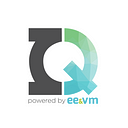The Rise of Silicon “Valleys”: The Case Of Shenzhen, China.
Silicon Valley — As the famous and iconic hub of innovation and technology and the home to revolutionary companies like Apple and Google, it is considered the keystone of technological innovation to many. For many years, its rate of growth and innovation been considered to be unmatched, and in many ways — it still is. However, increased globalization and rapid growth in other countries have led to technological spheres that some claim surpass the industries we have grown familiar with.
A Closer Look at Shenzhen, China
When I first stumbled upon an article describing Shenzhen’s rapidly paced development, I only had a very general understanding of Shenzhen’s reputation as a city known for shopping opportunities and its distinctively competitive, innovative nature. Shenzhen is a city that was specially tailored to become a bustling, vibrant economy; the Chinese government encouraged rapid foreign direct investments, various campaigns, and preferential policies that created the “ideal environment” that catalyzed the enormous growth observed in the 1990s to 2000s. After doing some brief research, I could probably best define this period as “extreme production”, a trait that hasn’t really dwindled since. This mass production was accompanied by the subsequent openings of the first foreign banks and stock exchanges in China; so on a long-term scale, it is not surprising that Shenzhen is now home to the Chinese tech giants of Huawei and Tencent.
Today, Shenzhen is still considered a global hub for hardware; it is the go-to location for grassroots innovators to find the merchandise and resources necessary for their prototypes and products. Visitors and residents of Shenzhen note the distinct sounds of shopkeepers and their packaging supplies, and there is even the unique phrase, “Shenzhen speed,” that describe the whir of motorcycles, machinery, and cargo ships each morning. There are complexes spanning hundreds of thousands of square feet of just machinery and electronic parts, and while many of it does consist of “replica” parts of Apple and Samsung devices, there is still an abundance of new, shiny inventions amongst the chaotic growth.
Young, passionate entrepreneurs all around the world are now investigating Shenzhen’s resources to create unique technology without the hassle, and the process of requesting and commissioning for completed prototypes is significantly faster and cheaper. The process of finding hardware engineers is simplified, and many high-tech companies that start in Shenzhen receive incentives such as exemption from corporate taxes and even housing and income tax reductions as they grow and are deemed successful. These incentives, combined with the cheap prices, rapidly paced work, and loose regulations, have led to a unique and exponentially growing innovative ecosystem, and has eventually led to the dub of Shenzhen being the “ Chinese Silicon Valley”.
While the successes of Shenzhen are evident, there is still debate about whether or not Shenzhen can reach the levels of long-term dominance that the companies of Silicon Valley possess. With such a dynamic, fast-paced environment, many of the companies of Shenzhen are still roughly in the “start-up” phase of their business development, and there are still barriers in terms of globalization, communication, and varying norms. Shenzhen does lack the presence of educational institutions that could play as “feeder institutions”, such as how Silicon Valley has Stanford University and UC Berkeley, the origin points of influential figures such as Mark Zuckerburg. There is also conflict regarding the selling of counterfeit products and employee rights, factors that can hinder their ability to be seen as a main, global powerhouse. Behind the emphasized and dazzling “fast-paced” production are the possible issues of human rights and environmental violations, which are rightfully being pushed to the forefront.
With all these factors in mind, it is still undeniable that global innovation powers are keeping an eye out for this “Silicon Valley” of Shenzhen. Developments are constantly in action, the city’s government is launching venture capital investments and newfound talents in innovation have been experimenting in this “hardware dreamland” more and more. Shenzhen could definitely become a powerhouse for entirely new creations and entrepreneurship, or the emphasis of this city’s production could return to being simply a source for “pieces” of technological creations.
Written by: May Zhou | IQ Associate
